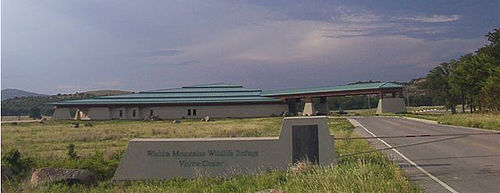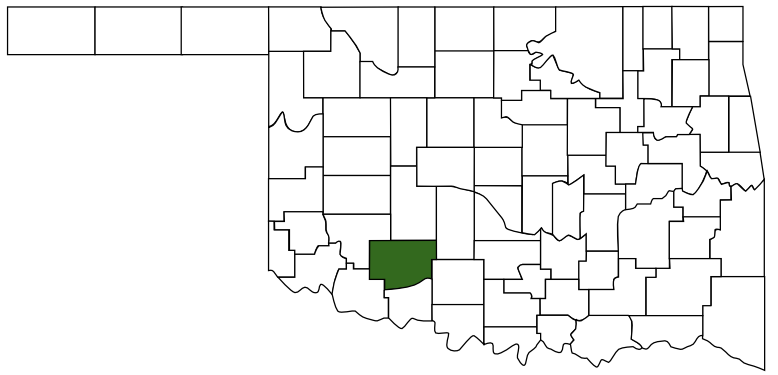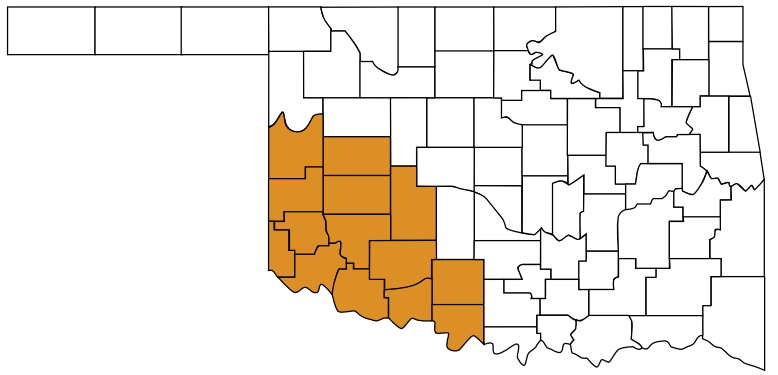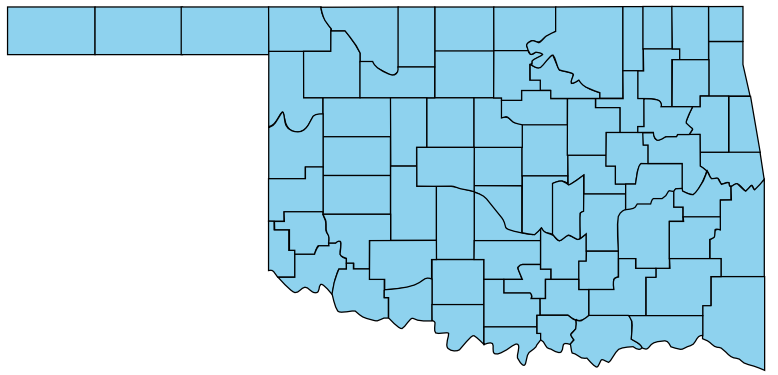Wichita Mountains Wildlife Refuge
Wichita Mountains Wildlife Refuge
Our 59,000 plus acre national refuge is home to free range buffalo, Texas longhorn cattle, prairie dogs, elk and deer. We also offer incredible scenery and views for hikers and photographers. Recreation opportunities include mountain biking, rock climbing, rappelling, approximately 15 miles of hiking trails, campsites, picnic areas, and fishing. The Quanah Parker Nature and Visitor Center is on site and features exhibits on wildlife and habitats of the Wichita Mountains, interactive and changing displays, artwork, videos and films, and a bookstore. Nature and wildlife tours are periodically scheduled throughout the year, with required reservations, and departing from the headquarters office either by foot, on bus or a combination of both. Charons Garden Wilderness Area and the North Mountain Wilderness Area are located within the Wichita Mountains Wildlife Refuge.
Location
Directions
From I-44 take Highway 49 (exit 45). Go west 10 miles to the Refuge gate. If coming from Highway 62, take Highway 115 (Cache exit) north to the Refuge Gate.
Regions
Maps
- 34.71100, -98.62337
- OpenStreetMap
- Google Maps
- Bing Maps
- Apple Maps
- MapQuest
Pictures
Notes












- BlogOklahoma.us: July 4th Weekend (2004)
- Offical Site of the Wichita Mountains Wildlife Refuge
A Brief Refuge History
The Wichita Mountains Wildlife Refuge is a tract of approximately 60,000 acres embracing a major portion of the Wichita Mountains in southwestern Oklahoma. Set aside from the Comanche-Kiowa-Apache Indian Reservation as a National Forest in 1901 and administered by the U.S. Forest Service, the area was transferred in 1935 to the Bureau of Biological Survey, one of the predecessor agencies of the present day Fish and Wildlife Service, for administration under the national wildlife refuge program.
The Wichita Mountains rank among the oldest ranges on earth. Formation of these mountains began some 500 million years ago when stratified layers of eroded silt were deposited. Through the ages climatic forces have chiseled and sculptured the mountains until all that remain of once lofty escarpments are weather-reduced knobs and domes. The Geology Page includes more detailed information.
The word Wichita is derived from two archaic Wichita Indian words: "Weets", which means "man" and "ee-taw" which signifies "of the north". The Wichita Indians felt that their original ancestors issued from the rocky points of the mountains. French traders who visited the area during the 1770's, probably first affirmed this name to the mountains.
The Wichitas are rich in historical lore. Spanish traders bartered with several Indian tribes for hides and other artifacts and legends persist of hidden treasures of Spanish gold. Colonel Henry Dodge made the first American contact with native tribes when he and a troop of dragoons visited the area in 1834 in an effort to halt Indian raids of the Santa Fe Trail. Marauding bands of Comanches used the mountains as a resting and hiding site after pillaging deep in Texas and Mexico and, in 1843, J.C. Eldredge, commissioned by President Sam Houston of Texas to make a treaty with the Comanches, found them camped in the mountains where negotiations took place. Captain R. B. Marcy, directed to explore the source of the Red River in 1852, investigated the Wichitas, collected specimens of flora and fauna, noted geological formations and named Mount Scott. General Phil Sheridan shot elk near the mountain which now bears his name. Quanah Parker, last of the Comanche Chieftains, called the Wichita Mountains home and build a large square house with four large stars on the roof near the present refuge - hence the name Star House. Quanah and his mother, Cynthia Ann Parker, a white girl captured by Comanches in Texas, lies buried in a shrine a few miles south of the refuge boundary. Geronimo, famed Apache chief, was imprisoned for many years at nearby Fort Sill. Lone Wolf, Kiowa leader, purportedly is buried in an unmarked grave on the north side of Mount Scott.
There are legends of lost mines and cached treasure. The James gang is supposed to have buried bandit loot somewhere among the boulder strewn slopes of the Wichita and other, less renowned, outlaws supposedly secreted booty in the mountains. Kiowas raided a wagon train on the Santa Fe trail and tales of hidden silver are told. None of these legends have proven true.
Mining activity flourished for a time at the turn of the 20th century and Camp Doris, a mining community near present day Quanah Parker Lake, was the center of cultural accomplishment. Early day miners, cattlemen and ranchers attended social gatherings at the camp. Theodore Roosevelt, on a wolf hunt, was the camp's most distinguished guest. Today, Camp Doris is the site of the Refuge's public campground.
Buffalo, once nearly extinct, were reintroduced in 1907 and has made an amazing comeback under close and scientific care. Progenitors of present-day longhorns date to Neolithic times and were first domesticated in Europe from Asiatic stock. Villalobos, a Spanish explorer, brought them to Mexico in 1521. Once the prime beef cattle of the United States, improved breeds forced the longhorn into virtual extinction. A nucleus herd was brought to the refuge in 1927 from the lower Rio Grande region, and the herd is maintained for historic posterity.
Elk, exterminated in 1875, are thriving as a result of transplants from Jackson Hole, Wyoming. White-tailed deer, wild turkeys, raccoons, opossums and other animals are common.
A remnant of the days before white settlement, the Wichita Mountains Wildlife Refuge is an island in the sea of modernity and a segment of southwestern history preserved for future generations.
written by Harry B. Candell, United States Department of Interior, U.S. Fish and Wildlife Service - Maps & Brochures
- TravelOK.com - Wichita Mountains Wildlife Refuge & Visitor's Center


 Comanche County
Comanche County Great Plains Country
Great Plains Country Oklahoma
Oklahoma